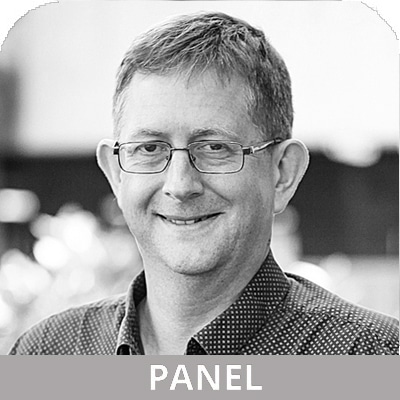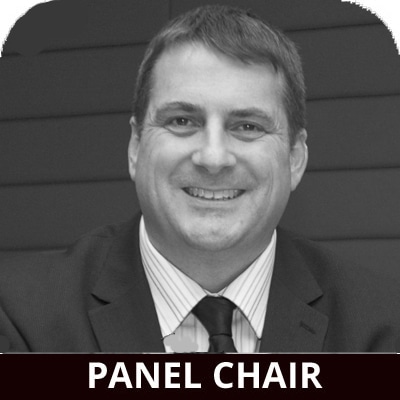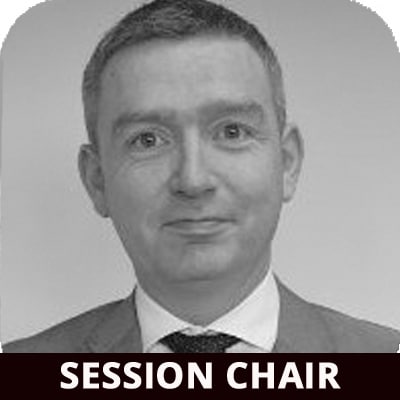A selection of our Speakers
We have a great selection of speakers for our conference this year
Click on the images below for more details about who they are and what they will be discussing
We will be updating this list regularly so please remember to come back and check
JUMP TO A SESSION
EXECUTIVE SESSION

Rob Millar
Williams Advanced Engineering
Rob Millar
Rob started his career as an electronics engineer, working on automotive body control systems, before moving into an electrical integration role in automotive systems with TWR Engineering in 1992. In 2004, he took a step towards the electrification of vehicles by founding his own company which developed electronic systems for Modec, Tata and Daimler vehicles amongst others. Having first worked with Williams in 2010 in delivering the Jaguar C-X75 project he joined the company in 2016 to deliver its long-term innovative plans for batteries and electronics.
Rob will be presenting on “F1 – Counter-Intuitive Test Bed for the Autonomous Car?”. Rob’s presentation will focus on an exploration of the technologies relevant to autonomous vehicles – whether and how F1 technology addresses them.

Tony Harper
UKRI Faraday Battery Challenge
Tony Harper
Tony Harper is The Industrial Strategy Challenge Director for the Faraday Battery Challenge at UKRI. Tony was previously Director of Research Engineering for Jaguar Land Rover. Tony joined Jaguar as a Graduate Engineer in 1986 with an honours degree in Aeronautical Engineering at Imperial College London. He spent his early career developing the first Airbag-based passive safety systems and developing a number of sports car concepts including the first XK8.
In the early 1990’s, Tony was involved in the development and use of pioneering Knowledge Based Engineering systems automating sophisticated rule-based Design tasks. In 1999, Tony was appointed as head of Jaguar’s Vehicle Engineering team responsible for Concept Design, Packaging, Aerodynamics and Vehicle Computer Aided Engineering. In 2006, Tony joined Jaguar Land Rover’s combined Product Development Operations to head up the Research and Advanced group. In recent years , Tony has worked closely with the EPSRC and Innovate UK on a number of large, strategic projects on Electrification and Autonomy. He’s a Chartered Engineer, fellow of the IMechE, an honorary fellow of the University Of Warwick, an elected member of the UK Automotive Council Technology group, sits on numerous advisory councils and has recently become a Fellow of The Royal Academy of Engineering.
ABSTRACT
The Car manufacturer challenge in a fast paced world of More Electric, Connected and Automated Vehicles
Car makers are now planning for and building next generation more electric connected and automated vehicles This talk will give a view of how the high level requirements of the Car maker
are being addressed by the Faraday Challenge for Battery Technology, APC for Advanced Propulsion Systems and AESIN in Partnership with MERIDIAN for Automotive Electronic Systems and Security.

Daniel Ruiz
Meridian
Daniel Ruiz
Dr Daniel Ruiz joined Meridian Mobility UK Ltd (Meridian) as CEO in January 2018 leading the UK’s £100 million connected and autonomous vehicle (CAV) programme.
Meridian is the UK’s hub for testing and development of CAV, established in September 2017 with joint funding from industry and government to accelerate the uptake of CAV technologies and to exploit their social and economic potential.
Meridian is currently channelling £100m of matched funding into infrastructure and associated projects which will form the core of Testbed UK: an integrated, comprehensive testing ecosystem for CAV and their environments. Meridian is responsible for scoping and overseeing the ecosystem.
Daniel joined Meridian from Dynniq UK Ltd, where he was Managing Director. As MD of Dynniq, Daniel led a 500-strong team tackling traffic challenges on the road networks in the UK and Ireland by developing, installing and maintaining a number of technology-based solutions. He previously held roles as Head of Real Time Operations at Transport for London (TfL), Launch Director of the UK’s intelligent mobility innovation centre (the Transport Systems Catapult), and Programme Director for the Transport Coordination Centre for the London 2012 Games.
Daniel gained his engineering degree from Selwyn College, Cambridge and his PhD in engineering from New College, Oxford.
ABSTRACT
Trust – the key to unlocking the social and economic benefits of CAVs
As self-driving vehicle and technology development accelerates, Meridian and its industry stakeholders have begun identifying the priorities for the UK. Daniel will talk about the short term actions and long term vision for the mobility sector covering safety, security, legality and acceptance and how the UK’s expertise in advanced electronics provides a unique and critical opportunity for business, government, investors and users
COMMUNICATION FOR V2X
Followed by panel discussion inc. speakers plus special guests
SESSION CHAIR

Martin Green, Connected Car and Cloud Global Product Manager, Visteon Corporation
As a global product manager at Visteon, Martin Green is responsible for analysing global technology trends, working with industry consortia and technology companies to identify future customer needs and bring to market the next generation of Visteon’s cellular and V2X connectivity technologies. Prior to this current role, Martin was global product marketing manager for Visteon’s electronics product group and the marketing manager for the powertrain technologies division.
Martin is the chairman for AESIN’s Communication Work Stream, is on the UK5G steering board and is active in several UK projects, the most recent being the system architect for the CAV funded UK CITE project.
With a 22 years of automotive experience, Martin joined Ford Motor Company in 1994 to establish an engine component design group and managed engineering teams across Europe. He subsequently progressed into advanced control systems engineering at Visteon Corporation managing global projects across powertrain, chassis and ADAS; and from there into cockpit electronics. ( Patents : Several )
SPEAKERS & PANELISTS

Darren Capes – Department of Transport
Darren Capes
Darren has 30 years of experience working in highways and transportation in UK Local Authorities. Trained as an Incorporated Civil Engineer, Darren has during this time been involved in highway design and construction, transport planning and the procurement and operation of traffic and highways technology. Darren is employed as Transport Systems Manager with City of York Council, with responsibility for urban traffic control, transport technology and CCTV. He is currently undertaking a two year full-time secondment with the Department for Transport as ITS Policy Lead. He is a Fellow of both the Institution of Engineering and Technology (IET) and Institute of Highways Engineers (IHE) and sits on the IET’s Transport Policy Panel and Transport Sector Executive Committee. He has represented the IET in discussions with Government, in the wider community of engineering institutions and has presented oral evidence to House of Commons and House of Lords Select Committees. Darren is also a director of the Transport Technology Forum.
ABSTRACT
V2I offers potentially large benefits to drivers, other road users and operators and offers a whole set of new features for vehicle makers and their customers. But the focus is often on the V “element ” – the user facing functions in the vehicle, and the “2” part – the communications between vehicle and roadside such as 5G and G5. But the “I” element is the Cinderella area, as its often assumed that data will simply flow to other infrastructure systems without any challenge.
The “I” at the roadside is already a complicated system in the UK, ranging from 30,000 traffic signal junctions through to Bluetooth beacons, motorway loops and signals and increasingly parking sensors.
Connecting to this aging estate of roadside infrastructure and the back-office systems and databases will be a challenge, especially for local authorities with limited technical resource and budgets. There is a strong appetite however to make connected vehicles work to help move away from reliance on costly in road sensing and to manage roads far better with the volumes of data we could access. The question is how do we do it?
To address this, Darren will talk from a road operator’s perspective about the challenge and opportunity “I” brings, especially focussing on local roads.

Paul Green – Iotic Labs
Paul Green
Paul is a founding director of leading Iotic-Labs, a web of things both private and public that enables secure and creative interactions between all kinds of sources and platforms. Visionary and creative, he previously co-founded Arkessa, the fast-growing enterprise IoT business.
Paul is passionate about enabling technology to benefit business, people and society as a whole. He is known for his thought leadership and technology concepts that merge multiple disciplines and disrupt current practice. Working with STL Partners, he provides strategic consultancy for many global telecommunications and technology enterprises. Paul combines an imaginative flair for innovation with his personal life as a Christian minister, love of mountain walking and interests in railways and science.
ABSTRACT
It’s great to put smart systems in trucks, vans and cars, but what can you do if the infrastructure is too dumb to make use of it? Most towns and cities are struggling to work out what to do and where to start. Most existing connectivity is too specific in its approach to be useful for V2X and data analysis silos plus multiple connectivity technologies just make matters worse.
V2X benefits from an Internet of Things (IoT) that enables numerous transient connections with a huge diversity of unrelated devices, machines and sensors with many producers and consumers of data and controls. Addressing this need does not require new connectivity. What we need is a new way of thinking to support connectivity agnostic, cross-platform infrastructure that can cope with the colliding worlds of AI, IoT, and smart vehicles.
Paul will draw on his experience of implementing Digital Twin technology, IoT communication platforms and secure interoperability across enduring and transitory ecosystems to illustrate disruptive but practical V2X for cities, towns and rural applications. This will be placed within a global market context referencing unique models and global connected vehicle studies conducted by strategic consultants STL Partners.
Case Studies :
Real-life case studies will be used to illustrate the topic:
- Smart Logistics – Practical supply chain issues confronting third party distributors working with major retailers for store access, warehousing, trucks and loads.
- Interoperability – Smart highway construction creating interoperable ‘communities’ of assets, rental equipment, contract staff, local sensor data such as water, weather, humidity and even school opening hours.
- Digital Twin – How to start creating Digital Twin of vehicles and relating these to the Digital Twin of a ports, car parks, communities, etc.
- Smart Accidents – Context is everything so combining vehicle data with location-based sensors is beneficial for insurers and vehicle operators.

Bob Banks – Vodaphone
Bob Banks
Bob is a stalwart of Vodafone having joined back in November 1986 after obtaining BSc, MSc and PhD in radio communication engineering from Bath University. He spent his first 13 years working for the local operator in the UK on radio base station design & development for both analogue and digital cellular systems. At the start of the Millennium he moved into the parent company, Vodafone Group, working on product/service design & development. In 2007 Bob began working for Group R&D in areas such as Machine-to-Machine (M2M) and License Assisted Access (LAA). In 2015 he commenced his work on C-V2X, becoming Chair of the 5GAA Working Group 3 (Evaluation, Testbeds & Pilots) in early 2017.
ABSTRACT
5GAA – bringing the mobile and automotive industries together
Whilst the mobile and automotive industries are already well known to each other, the move to connected and automated vehicles requires this relationship to be taken to another level.
The degree of engagement and integration between the 2 industries required to deliver connected/automated vehicles is much higher than anything seen previously.
5GAA has been formed to address this much closer working relationship and to ensure that the connected/automated vehicles delivered are of the best possible performance.

Andy Pascoe – Meridian
Andy Pascoe
Andy has represented high performance technology brands for his whole career. Initially he spent over a decade in Formula 1 before moving into defence, aerospace, automotive and currently as business development lead for Meridian Mobility, focussed on the revolution occurring in transport on the journey toward the future of mobility. Now he represents the UK as a whole and is dedicated to helping UK businesses grow in revenue and impact as they test and develop solutions for self driving vehicles and their operational environments.
PANEL CHAIR : TO BE ANNOUNCED SHORTLY

Martin Green – Visteon
SPEAKER NINE
Rob Millar is Head of Electrical at Williams Advanced Engineering, the technology and engineering services business of the Williams Group. Williams Advanced Engineering provides world class innovation in engineering and technology, operational performance, testing and manufacturing services, working in a range of sectors including Automotive, Motorsport, Civil Aerospace, Defence, Healthcare, Sports Science and Energy.
Rob started his career as an electronics engineer, working on automotive body control systems, before moving into an electrical integration role in automotive systems with TWR Engineering in 1992. In 2004, he took a step towards the electrification of vehicles by founding his own company which developed electronic systems for Modec, Tata and Daimler vehicles amongst others. Having first worked with Williams in 2010 in delivering the Jaguar C-X75 project he joined the company in 2016 to deliver its long-term innovative plans for batteries and electronics.

Martin Green – Visteon
SPEAKER NINE
Rob Millar is Head of Electrical at Williams Advanced Engineering, the technology and engineering services business of the Williams Group. Williams Advanced Engineering provides world class innovation in engineering and technology, operational performance, testing and manufacturing services, working in a range of sectors including Automotive, Motorsport, Civil Aerospace, Defence, Healthcare, Sports Science and Energy.
Rob started his career as an electronics engineer, working on automotive body control systems, before moving into an electrical integration role in automotive systems with TWR Engineering in 1992. In 2004, he took a step towards the electrification of vehicles by founding his own company which developed electronic systems for Modec, Tata and Daimler vehicles amongst others. Having first worked with Williams in 2010 in delivering the Jaguar C-X75 project he joined the company in 2016 to deliver its long-term innovative plans for batteries and electronics.

Martin Green – Visteon
SPEAKER NINE
Rob Millar is Head of Electrical at Williams Advanced Engineering, the technology and engineering services business of the Williams Group. Williams Advanced Engineering provides world class innovation in engineering and technology, operational performance, testing and manufacturing services, working in a range of sectors including Automotive, Motorsport, Civil Aerospace, Defence, Healthcare, Sports Science and Energy.
Rob started his career as an electronics engineer, working on automotive body control systems, before moving into an electrical integration role in automotive systems with TWR Engineering in 1992. In 2004, he took a step towards the electrification of vehicles by founding his own company which developed electronic systems for Modec, Tata and Daimler vehicles amongst others. Having first worked with Williams in 2010 in delivering the Jaguar C-X75 project he joined the company in 2016 to deliver its long-term innovative plans for batteries and electronics.

Martin Green – Visteon
SPEAKER NINE
Rob Millar is Head of Electrical at Williams Advanced Engineering, the technology and engineering services business of the Williams Group. Williams Advanced Engineering provides world class innovation in engineering and technology, operational performance, testing and manufacturing services, working in a range of sectors including Automotive, Motorsport, Civil Aerospace, Defence, Healthcare, Sports Science and Energy.
Rob started his career as an electronics engineer, working on automotive body control systems, before moving into an electrical integration role in automotive systems with TWR Engineering in 1992. In 2004, he took a step towards the electrification of vehicles by founding his own company which developed electronic systems for Modec, Tata and Daimler vehicles amongst others. Having first worked with Williams in 2010 in delivering the Jaguar C-X75 project he joined the company in 2016 to deliver its long-term innovative plans for batteries and electronics.
MORE ELECTRIC POWERTRAIN
Session Chair : Graham Gest, TATA.
Followed by panel discussion inc. speakers plus special guests
 To be announced
To be announced
SPEAKERS & PANELISTS
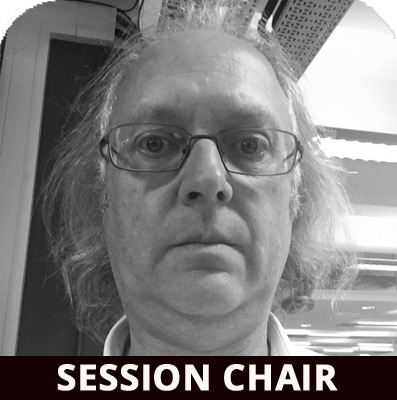
Graham Gest – TATA Motors
Graham Gest
An engineering manager with broad experience of automotive industry together with extensive experience of research and development. For the last 10 years Graham has been employed by Tata Motors European Technical Centre (TMETC). During this time he has instigated and grown a power supply development team in India as well as leading the development of the UK power systems group covering traditional and electric vehicles. The latter has included the development and integration of power systems (batteries, motors, inverters and converters) into the TMETC EV fleet. This has also included the development of ISO 26262 within the company.
More recently Graham has taken ownership the company’s innovation activities. In this role the number of innovative ideas developed within the company have significantly increased. Previously employed by Visteon UK Ltd for 9 years. During this time, Graham led the advanced development of a head up display system and managed Visteon’s starter and alternator business outside of the USA.

Andy Birnie – NXP
Andy Birnie
After graduating from the University of Glasgow, Andy Birnie had various roles in product & technology development, but is currently Systems Engineering Manager for Automotive Microcontrollers and Processors within NXP. In this role Andy is responsible for working with Tier1s and OEMs to understand market trends and customer demands, to define the next generation of microcontrollers, keeping NXP at the forefront of automotive electronics systems technology.
ABSTRACT
Driven by legislation and social responsibility, the electrification megatrend is at last gathering momentum. As it becomes mainstream, it drives new architectures and technologies in the multitude of enabling microcontrollers. Electrification and autonomy are causing a period of change in the automotive market like never seen before, and microcontrollers need to match that rate of change and innovation. They need to offer new levels of compute performance for the mathematically intense energy optimisation models while maintaining real-time capabilities. They need to provide the assurance of functional safety beyond ASIL-D and cyber security protection with side-channel resilience and the ability to re-flash OTA. And they need to offer virtualisation capabilities, normally associated with larger applications processors, which enable the integration of multiple applications within a single device.

Phil Mellor – University of Bristol
Phil Mellor
Phil H. Mellor (M’13) received the B.Eng. and Ph.D. degrees in electrical engineering from the Department of Electrical Engineering, University of Liverpool, Liverpool, U.K., in 1978 and 1981, respectively. He is currently a Professor of Electrical Engineering with the Department of Electrical and Electronic Engineering, University of Bristol, Bristol, U.K, where he is the head of the Electrical Energy Management Group (EEMG).
Prior to this, he held academic posts at the University of Liverpool from 1986 to 1990 and the University of Sheffield, Sheffield, U.K., from 1990 to 2000. His research interests include high-efficiency electric drives, and actuation and generation systems for application in more electric aircraft and hybrid electric vehicles.

Nick Simpson – University of Bristol
Nick Simpson
Dr. Nick Simpson received the degrees of Bachelor of Engineering and PhD in electrical and electronic engineering from the University of Bristol in 2009 and 2014 respectively, where he is presently an academic within the Electrical Energy Management Group. His research focuses on the experimentally informed multi-physics design of electrical machines incorporating advanced manufacturing methods.

James Hybittle – Ricardo
James Haybittle
James graduated from the University of Surrey with a degree in Mechanical Engineering, and subsequently joined Ricardo in 2014. His career to date has combined mechanical design and thermal analysis of powertrain systems, namely projects concerning automotive batteries, motors, and inverters
ABSTRACT
Designing an oil-cooled inverter with low thermal resistance
A novel inverter was developed for a hybrid vehicle. It is rated at 25kW to drive a 6-phase eMachine, with a 48V dc-link. Oil- and water-cooled variants are explored. The focus of the work was reducing the thermal resistance of the inverter through the use of impingement jet cooling. Cooling of the electrically live tab of MOSFETs is well known to reduce thermal impedance, hence improving performance; this was achieved in the oil-cooled design by exploiting the oil’s electrical insulating property
PANEL : TO BE ANNOUNCED

Martin Green – Visteon
SPEAKER NINE
Rob Millar is Head of Electrical at Williams Advanced Engineering, the technology and engineering services business of the Williams Group. Williams Advanced Engineering provides world class innovation in engineering and technology, operational performance, testing and manufacturing services, working in a range of sectors including Automotive, Motorsport, Civil Aerospace, Defence, Healthcare, Sports Science and Energy.
Rob started his career as an electronics engineer, working on automotive body control systems, before moving into an electrical integration role in automotive systems with TWR Engineering in 1992. In 2004, he took a step towards the electrification of vehicles by founding his own company which developed electronic systems for Modec, Tata and Daimler vehicles amongst others. Having first worked with Williams in 2010 in delivering the Jaguar C-X75 project he joined the company in 2016 to deliver its long-term innovative plans for batteries and electronics.

Martin Green – Visteon
SPEAKER NINE
Rob Millar is Head of Electrical at Williams Advanced Engineering, the technology and engineering services business of the Williams Group. Williams Advanced Engineering provides world class innovation in engineering and technology, operational performance, testing and manufacturing services, working in a range of sectors including Automotive, Motorsport, Civil Aerospace, Defence, Healthcare, Sports Science and Energy.
Rob started his career as an electronics engineer, working on automotive body control systems, before moving into an electrical integration role in automotive systems with TWR Engineering in 1992. In 2004, he took a step towards the electrification of vehicles by founding his own company which developed electronic systems for Modec, Tata and Daimler vehicles amongst others. Having first worked with Williams in 2010 in delivering the Jaguar C-X75 project he joined the company in 2016 to deliver its long-term innovative plans for batteries and electronics.

Martin Green – Visteon
SPEAKER NINE
Rob Millar is Head of Electrical at Williams Advanced Engineering, the technology and engineering services business of the Williams Group. Williams Advanced Engineering provides world class innovation in engineering and technology, operational performance, testing and manufacturing services, working in a range of sectors including Automotive, Motorsport, Civil Aerospace, Defence, Healthcare, Sports Science and Energy.
Rob started his career as an electronics engineer, working on automotive body control systems, before moving into an electrical integration role in automotive systems with TWR Engineering in 1992. In 2004, he took a step towards the electrification of vehicles by founding his own company which developed electronic systems for Modec, Tata and Daimler vehicles amongst others. Having first worked with Williams in 2010 in delivering the Jaguar C-X75 project he joined the company in 2016 to deliver its long-term innovative plans for batteries and electronics.

Martin Green – Visteon
SPEAKER NINE
Rob Millar is Head of Electrical at Williams Advanced Engineering, the technology and engineering services business of the Williams Group. Williams Advanced Engineering provides world class innovation in engineering and technology, operational performance, testing and manufacturing services, working in a range of sectors including Automotive, Motorsport, Civil Aerospace, Defence, Healthcare, Sports Science and Energy.
Rob started his career as an electronics engineer, working on automotive body control systems, before moving into an electrical integration role in automotive systems with TWR Engineering in 1992. In 2004, he took a step towards the electrification of vehicles by founding his own company which developed electronic systems for Modec, Tata and Daimler vehicles amongst others. Having first worked with Williams in 2010 in delivering the Jaguar C-X75 project he joined the company in 2016 to deliver its long-term innovative plans for batteries and electronics.
AUTOMOTIVE SECURITY
Followed by panel discussion inc. speakers plus special guests
SESSION CHAIR : Peter Davies, Thales Security
Session introduced by NCSC Technology Strategy Lead for Automotive

SPEAKERS

Xavier Villarubla – Brightsight
Xavier Vilarrubla
Xavier Vilarrubla is General Manager Brightsight Barcelona, the number one security lab in the world.
Xavier is an experienced security professional, working in the information security business for close to 15 years. He has gained his experience in projects revolving around the security of products as smart cards, HSM’s and payment terminals with clients from a variety of domains, including banking, defence, automotive, medical and governments.
Currently Xavier is focussing on the Automotive industry, working closely with regulators, industry and manufacturers finding optimal solutions for their security needs.
ABSTRACT
The Internet of Things (IoT) is becoming more widespread every day, and with this spread, the number of security incidents involving IoT is rising in the Automotive industry. Industry and regulators worldwide are looking at security evaluation as a possible solution for the security problems introduced by IoT. Many initiatives take a silo approach and are looking at security testing/evaluation of various product types.
This presentation examines the assessment of security of relatively simple IoT endpoint devices and shows that assessing these endpoint devices as a whole is problematical and un-economical. In this presentation we advocate a two-step approach consisting of a thorough security evaluation of so-called platforms, followed by a high-level and fast security test of the final product. This approach is more aligned with the economic interests and technical possibilities of the developers of IoT products in the Automotive industry, and is therefore much more suitable.

Jonathan Moore – Exida
Jonathan Moore
Jonathan Moore is the Director of Advanced Systems with exida Consulting LLC. He has over 20 years of automotive and robotics experience in systems engineering, failure mode avoidance and standards based software development. He focuses on supporting new and existing customers with their implementation of functional safety standards.He has a Bachelor of Electrical and Electronic Systems Engineering from University of York and a Master of Science Electromagnetic Compatibility from University of York.
Jonathan has worked with (and for) several automotive OEMs around the world and hundreds of Tier Ones and startups. More recently with exida he has been called on to help innovative technology companies find solutions to real world safety problems and applies his skill and knowledge of a whole range of functional safety standards including ISO 26262 to guide engineering solutions toward improved reliability, performance and safety.
ABSTRACT
Safety in automobiles increasingly seems to be using algorithms not traditionally selected for safety applications. Language including Artificial Intelligence, Machine Learning, Cloud Computing is making its way into the headlines and the vocabulary of engineers solving complex safety related problems. Received wisdom, including from standards, suggests reducing complexity is important for safety but provides no guidance. Non-deterministic computing algorithms are trivial to create so how can we keep up with this rapidly changing new frontier in safety and ensure the risks remain tolerable? Are there parallels with more mature branches of reliability that apply to these types of algorithm that can guide us? How will we help consumers know which autonomous driving solutions deserve their trust or are worth the extra expense? Do our algorithms need to be as good as the average driver and if they need to be better, how much better is enough?

Peter Davies – Thales eSecurity
Peter Davies
Director Security Concepts
As a Technical Director of Thales in the UK Peter has been their leading expert on Cryptography in the UK responsible for providing cryptography and information security direction and expertise on a variety of products and projects. Previous work includes the development and certification of flexible and interoperable commercial security solutions that are also widely used by governments; these solutions are available worldwide and support the security of both communications and infomatics in an international, multi grade environment. Peters specialist knowledge is at the core of the cyber defence and forensics activities that he undertakes combatting existential treats against business. Peter has, interacted on security and products at any level from Prime Minister, through Board to deep technical including Certification Labs and partners developing and sustaining business opportunities worldwide. Peter has generated patents in the area of digital DNA and his research covers aspects of technical security as well as aspects of super-identities and their role in combatting human based cyber-attacks. As well as contributing to standards Peter is a frequent speaker at international conferences and delivers lectures to postgraduate information and cyber security programmes in the UK and worldwide.
Concentrated on Digital Resilience and Survivability. Involved in the specification and development of many successful large-scale security schemes including credit card and mobile phone.
Peter currently leads the Security Workstream for the Automotive Electronic Systems
Innovation Network (AESIN) and security lead to the Innovate UK funded research programmes AutoDrive and RoboPilot.
Peter was recently won the 2017 Automobile Division prize for Safety and Security awarded by the Automobile Division Board of the Institution of Mechanical Engineers for his work on cybersecurity and presentation on ‘Addressing challenges in ensuring cyber security for autonomous vehicles’
Peter is a frequent speaker at conferences and contributor to journals concerned with Automotive Cyber Security, CNI, Law Enforcement and Commercial security. Interested in the paradigm shift in security models that must accompany a more connected and less controlled environment.
PANEL: TO BE ANNOUNCED

Martin Green – Visteon
SPEAKER NINE
Rob Millar is Head of Electrical at Williams Advanced Engineering, the technology and engineering services business of the Williams Group. Williams Advanced Engineering provides world class innovation in engineering and technology, operational performance, testing and manufacturing services, working in a range of sectors including Automotive, Motorsport, Civil Aerospace, Defence, Healthcare, Sports Science and Energy.
Rob started his career as an electronics engineer, working on automotive body control systems, before moving into an electrical integration role in automotive systems with TWR Engineering in 1992. In 2004, he took a step towards the electrification of vehicles by founding his own company which developed electronic systems for Modec, Tata and Daimler vehicles amongst others. Having first worked with Williams in 2010 in delivering the Jaguar C-X75 project he joined the company in 2016 to deliver its long-term innovative plans for batteries and electronics.

Martin Green – Visteon
SPEAKER NINE
Rob Millar is Head of Electrical at Williams Advanced Engineering, the technology and engineering services business of the Williams Group. Williams Advanced Engineering provides world class innovation in engineering and technology, operational performance, testing and manufacturing services, working in a range of sectors including Automotive, Motorsport, Civil Aerospace, Defence, Healthcare, Sports Science and Energy.
Rob started his career as an electronics engineer, working on automotive body control systems, before moving into an electrical integration role in automotive systems with TWR Engineering in 1992. In 2004, he took a step towards the electrification of vehicles by founding his own company which developed electronic systems for Modec, Tata and Daimler vehicles amongst others. Having first worked with Williams in 2010 in delivering the Jaguar C-X75 project he joined the company in 2016 to deliver its long-term innovative plans for batteries and electronics.

Martin Green – Visteon
SPEAKER NINE
Rob Millar is Head of Electrical at Williams Advanced Engineering, the technology and engineering services business of the Williams Group. Williams Advanced Engineering provides world class innovation in engineering and technology, operational performance, testing and manufacturing services, working in a range of sectors including Automotive, Motorsport, Civil Aerospace, Defence, Healthcare, Sports Science and Energy.
Rob started his career as an electronics engineer, working on automotive body control systems, before moving into an electrical integration role in automotive systems with TWR Engineering in 1992. In 2004, he took a step towards the electrification of vehicles by founding his own company which developed electronic systems for Modec, Tata and Daimler vehicles amongst others. Having first worked with Williams in 2010 in delivering the Jaguar C-X75 project he joined the company in 2016 to deliver its long-term innovative plans for batteries and electronics.

Martin Green – Visteon
SPEAKER NINE
Rob Millar is Head of Electrical at Williams Advanced Engineering, the technology and engineering services business of the Williams Group. Williams Advanced Engineering provides world class innovation in engineering and technology, operational performance, testing and manufacturing services, working in a range of sectors including Automotive, Motorsport, Civil Aerospace, Defence, Healthcare, Sports Science and Energy.
Rob started his career as an electronics engineer, working on automotive body control systems, before moving into an electrical integration role in automotive systems with TWR Engineering in 1992. In 2004, he took a step towards the electrification of vehicles by founding his own company which developed electronic systems for Modec, Tata and Daimler vehicles amongst others. Having first worked with Williams in 2010 in delivering the Jaguar C-X75 project he joined the company in 2016 to deliver its long-term innovative plans for batteries and electronics.
SOFTWARE
Followed by panel discussion inc. speakers plus special guests
SPEAKERS & PANELISTS

Illyas Rudkin – Codeplay
Illyas Rudkin
Illya has been a Principal Software Engineer at Codeplay Software since 2013 involved in the development of tools chains for automotive semiconductor customers. He is the Chair of the Khronos Safety Critical Advisory Forum and a member of the Khronos OpenCL Safety Critical Working Group. Illya is also a member of the MISRA C++ committee. Having received a BSc (Hons) degree (in Electrical and Electronic Engineering) following a 4 years electronics apprenticeship, he spent 12 years programming games, tool chains and profilers for Playstation 3 and Vita at Sony Computer Entertainment Europe. Before joining Codeplay he worked for a PC games company implementing anti-hack solutions.
ABSTRACT
It is well acknowledged that developing ADAS and autonomous car applications via open standards is necessary, but should safety critical features for automotive be agreed separately from all other industries? Khronos, the organisation responsible for creating open standards such as OpenGL, OpenCL and SYCL, have created the Safety Critical Advisory Forum to assist its members in the development of safety critical open standard APIs with experts from a broad range of safety critical domains including avionics and automotive. This presentation will show the benefits of evolving the standards with safety critical features, and how this will benefit developers, Tier 1s and OEMs, and also give an insight to how the Khronos Safety Critical Advisory Forum works for its members.

Chris Wild – Altran
Chris Wild
Biography to follow
ABSTRACT
The presentation begins by examining the context and challenges around the development of connected and autonomous vehicles and the resulting inherent complexity of these systems. We explore the way the vehicle architecture is evolving and suggest the way to manage this complexity is in the management of the software architecture. We introduce the concept of Service Oriented Architecture but suggest that to be fit for purpose a number of extensions are necessary to support the wider system aspects. We then present a concrete implementation of this approach whereby we consider the vehicle as an integration surface upon which to deploy these services. Finally we outline the need to extend the topology of the system through various connectivity models.
Please note that the concrete impelmentation is a product known as CoherenSE which has been co-developed with Jaguar Land Rover. The paper is well positioned to lead to questions and discussion around the use of Adaptive AUTOSAR.

Michael Welsh – Altran
Michael Welsh
Michael has over 30 years of experience in engineering including aerospace, high speed rail and automotive industries.
Over the past 20 years he has held various roles in the automotive industry at Ford, Visteon and Altran.
He holds a Bachelor’s Degree in Systems Engineering from Anglia Ruskin University and a Master’s Degree in Software Engineering from Oxford University.
Michael also sits on the UK AESIN Executive Steering Board.

Andrew Banks – LDRA
Andrew Banks
Andrew Banks is a Technical Specialist and Field Applications Engineer at LDRA, with over 25 years’ experience of high-integrity real-time/embedded software development.
A Chartered Fellow of the British Computer Society, he graduated from the University of Lancaster in 1989, and has spent most of his career within the aerospace, defence and automotive sectors.
Andrew has been involved with MISRA since 2007 and Chairman of the MISRA C Working Group since early 2013; he is the Chairman of the BSI “Software Testing” Working Group; and an active participant of other BSI, ISO, IET and SCSC work, including the recent revision of ISO 26262.
ABSTRACT
In December 2017, the AUTOSAR family of standards expanded to embrace the new “Adaptive Platform,” with the existing development branch now known as the “Classic Platform”. The Classic Platform is AUTOSAR’s established solution for embedded systems with hard real-time and safety constraints, first published in 2005.
The Adaptive Platform is AUTOSAR’s solution for high-performance computing ECUs to build safety-related systems for use cases such as highly automated and autonomous driving. The Adaptive and Classic platforms are underpinned by the AUTOSAR foundation to define concepts common to both.
But what does this mean for the developers tasked with writing applications to adhere to this new hierarchy? Even before the advent of the adaptive platform, AUTOSAR was huge and it was difficult to imagine any individual knowing all of it in detail. Now, the Adaptive platform introduces a new world of POSIX compliant RTOS, a new middleware standard (ara::com), and a new AUTOSAR C++ coding standard. Added to that, adherence to either AUTOSAR platform standard does not in itself imply compliance with such as the functional safety standard ISO 26262, let alone the SAE J3061 Cybersecurity guidebook, and it is easy to imagine becoming submerged in an attempt to concurrently adhere to so many potentially disparate guidelines.
This presentation outlines a methodology designed to ease the development path of AUTOSAR applications for either Classic or Adaptive Platforms, whilst achieving the appropriate functional safety and security standards.
PANEL

Martin Green – Visteon
SPEAKER NINE
Rob Millar is Head of Electrical at Williams Advanced Engineering, the technology and engineering services business of the Williams Group. Williams Advanced Engineering provides world class innovation in engineering and technology, operational performance, testing and manufacturing services, working in a range of sectors including Automotive, Motorsport, Civil Aerospace, Defence, Healthcare, Sports Science and Energy.
Rob started his career as an electronics engineer, working on automotive body control systems, before moving into an electrical integration role in automotive systems with TWR Engineering in 1992. In 2004, he took a step towards the electrification of vehicles by founding his own company which developed electronic systems for Modec, Tata and Daimler vehicles amongst others. Having first worked with Williams in 2010 in delivering the Jaguar C-X75 project he joined the company in 2016 to deliver its long-term innovative plans for batteries and electronics.

Martin Green – Visteon
SPEAKER NINE
Rob Millar is Head of Electrical at Williams Advanced Engineering, the technology and engineering services business of the Williams Group. Williams Advanced Engineering provides world class innovation in engineering and technology, operational performance, testing and manufacturing services, working in a range of sectors including Automotive, Motorsport, Civil Aerospace, Defence, Healthcare, Sports Science and Energy.
Rob started his career as an electronics engineer, working on automotive body control systems, before moving into an electrical integration role in automotive systems with TWR Engineering in 1992. In 2004, he took a step towards the electrification of vehicles by founding his own company which developed electronic systems for Modec, Tata and Daimler vehicles amongst others. Having first worked with Williams in 2010 in delivering the Jaguar C-X75 project he joined the company in 2016 to deliver its long-term innovative plans for batteries and electronics.

Martin Green – Visteon
SPEAKER NINE
Rob Millar is Head of Electrical at Williams Advanced Engineering, the technology and engineering services business of the Williams Group. Williams Advanced Engineering provides world class innovation in engineering and technology, operational performance, testing and manufacturing services, working in a range of sectors including Automotive, Motorsport, Civil Aerospace, Defence, Healthcare, Sports Science and Energy.
Rob started his career as an electronics engineer, working on automotive body control systems, before moving into an electrical integration role in automotive systems with TWR Engineering in 1992. In 2004, he took a step towards the electrification of vehicles by founding his own company which developed electronic systems for Modec, Tata and Daimler vehicles amongst others. Having first worked with Williams in 2010 in delivering the Jaguar C-X75 project he joined the company in 2016 to deliver its long-term innovative plans for batteries and electronics.

Martin Green – Visteon
SPEAKER NINE
Rob Millar is Head of Electrical at Williams Advanced Engineering, the technology and engineering services business of the Williams Group. Williams Advanced Engineering provides world class innovation in engineering and technology, operational performance, testing and manufacturing services, working in a range of sectors including Automotive, Motorsport, Civil Aerospace, Defence, Healthcare, Sports Science and Energy.
Rob started his career as an electronics engineer, working on automotive body control systems, before moving into an electrical integration role in automotive systems with TWR Engineering in 1992. In 2004, he took a step towards the electrification of vehicles by founding his own company which developed electronic systems for Modec, Tata and Daimler vehicles amongst others. Having first worked with Williams in 2010 in delivering the Jaguar C-X75 project he joined the company in 2016 to deliver its long-term innovative plans for batteries and electronics.
ADAS & AV
SESSION CHAIR : ALAN WALKER, AVL
 AVL – To be confirmed
AVL – To be confirmed
SPEAKERS

Rod Watt – ARM
Rod Watt
Rod is the Technical Director of Vehicle Architecture and System Analysis with responsibility for understanding the complete vehicle architecture; going beyond the SoC to understand the wider implications and usage of Arm IP. Rod is also responsible for system level analysis which involves analyzing the performance, power and efficiency of systems; comparing solutions and understanding implementations and processor architectures. This is done through various methods including benchmarking, teardowns and analyzing partners requirements documents. This work drives Arm’s IP road maps and ensures Arm remains a leader in high efficiency design implementations that are well suited to the automotive market.
Prior to joining Arm, Rod worked at Motorola, Cambridge Broadband Networks and Digital Equipment Corporation as a system designer. Rod has a Master’s Degree in Electrical and Electronic Engineering, a Member of The Institution of Engineering and Technology and is a Chartered Engineer.
ABSTRACT
Compute solutions for mass deployment of autonomy
The fleets of prototype vehicles being used the development of autonomous drive have generated a lot of media coverage and excitement, as autonomous vehicles have the potential to redefine mobility.
Redefining mobility will however require deployment of autonomous vehicles at scale, which brings with it specific compute constraints and requirements which are very different to those being used for research. This session will outline these constraints and requirements, which include compute capability, energy consumption, physical size, cost, safety, and security. We will also discuss how to address these challenges, the different types of compute elements required, distributed and centralized architectures, and the importance of functional safety.

Rubén Pérez de Aranda – KDPOF
Rubén Pérez de Aranda
CTO and Co-Founder of KDPOF
Mr. Pérez de Aranda has served as a profile manager on R&D projects in digital communication systems, including channel coding and modulation schemes design, synchronization and timing recovery, channel and noise estimation algorithms, optimal equalization algorithms and Multiple-Input Multiple-Output (MIMO) systems, and developing technology patents.
He previously worked as the head of the Project R&D department of SIDSA Systems-on-Chip, leading important projects related to DSL technology and 4GBB (4th Generation Broadband), the more promising successor of the hybrid fiber/copper VDSL2 access technology. Mr. Pérez de Aranda also has collaborated in DS2 as a software R&D engineer in the firmware department designing and implementing real-time software for PLC modems as well as VoIP over PLC.
Mr. Pérez de Aranda holds a degree in industrial engineering from the Polytechnic University of Madrid (Spain), specializing in automatic control and electronics.
ABSTRACT
As autonomous driving applications are emerging, it is of vital importance that all the systems involved in its implementation perform as intended under any unexpected situation. These systems are composed by sensors, actuators, and artificial intelligence computing units all of them connected along the car by means of communications network. Ethernet is being positioned here as the most promising candidate to serve as the communications network in the implementation of these systems, which has pushed the development of new automotive targeted Ethernet PHYs inside IEEE 802.3.
One of the most important unexpected situations that autonomous driving electronics systems have to deal with are related with Electromagnetic Compatibility (EMC). This is even more important as the in-car network speeds are demanded to increase to accommodate the driverless systems requirements. Higher speeds are achieved by wider use of the electromagnetic spectrum. This situation makes the underlying communications systems implementation less immune to radiated and conducted noises. This also forces to OEMs to impose more and more stringent emissions limits to the electronics components that many times are tighter than the demands imposed by the international standards.
This paper will describe the lessons learnt of the iterative design process with the final goal to bring into the market a mass production automotive Gigabit Ethernet PHY integrated in an ECU meeting the most stringent EMC specifications. Special attention will be devoted to describe how the EMC specifications have constrained the IC design (e.g. clock strategies, xGMII interfaces implementations), signal integrity measures, power distribution network, power management, PCB floor-plan and layout, and supporting components selection. In order to carry out this iterative process with an affordable cost and in a fast way, EMC pre-compliance test setups and methodologies have been developed, which will be also presented.
These EMC pre-compliance testing allows timely prediction of final compliance:
– Conducted and radiated emissions results in the range of 150 kHz to 6 GHz,
– BCI and radiated immunity results from 10 MHz to 4.2 GHz,
– and hints on root causes of emissions and immunity problems with near field analysis.

Dr. Burkhard Huhnke – Synopsys
Dr. Burkhard Huhnke
Dr. Burkhard Huhnke is the Vice President of Automotive Strategy at Synopsys. Prior to joining the company in early 2018, he was SVP of Product Innovation & E-Mobility at VW, based in Silicon Valley. He was responsible for synchronizing VW’s innovation activities and alliances to identify new concept ideas, business models, and partners in the U.S. and had end-to-end ownership of the electric vehicle platform in North America. Prior to that, he held several positions both in the U.S. and Germany including Senior GM, Electronics System Integration and Whole Vehicle Integration.
Dr. Huhnke studied electrical engineering at the University of Braunschweig. His dissertation about optical distance measurement was awarded with the International Measurement Prize.
Dr. Huhnke serves as Research Fellow for the Hult Business School in San Francisco. He is also a member of the Board of Advisors at the College of Engineering at the University of Tennessee–Knoxville and at the College of Engineering and Computer Science at the University of Tennessee–Chattanooga.
ABSTRACT
What an exciting time we live in: self-driving cars, fully electric and always connected to the internet to provide the user a seamless transportation experience. Many announcements around the mobile phone on wheels have been made. Some of the most exciting innovations happening in our cars: our cars are becoming our co-pilots as intelligent technologies make them safe and secure, more comfortable, and more autonomous. And with full connectivity the car becomes the new gold mine, a big data collector processing real time traffic data and million miles per day. With operating system updates over the air to make the car becomes smarter and smarter over lifetime.
To enable any automotive function for smart, connected and autonomous vehicles the car’s electronics architecture, and it’s supporting soft and hardware design and release processes must be adjusted. Any failure in the field results in very high cost and liability of the car manufacturer. Requirements for robust design of this a fault tolerant systems must be newly formulated. A holistic view on the system failure rate along the supply chain and lifecycle of automotive development and production is necessary. Consequently, robustness, safety, and security of self driving systems must significantly increase and monitored continuously.
Robust design begins in the early phase of car concepts. Automotive IP centers of excellence have been created, to ensure automotive compliant intellectual property for faster, smarter, low-energy chips reducing risk and development time. Automotive SoC design is meeting the highest safety integrity levels (ASIL) providing ADAS IP as design basis for the new advanced driver assistants architecture. By providing a simulation platform based on the processor models early virtual prototyping, emulation, and functional verification from modelling to test bench deployment becomes possible. Software experts required to ensure fault tolerant, highly reliable, functional safe & secure will ensure to launch software along the automotive lifecycle.
Panel inc. speakers plus these special guests
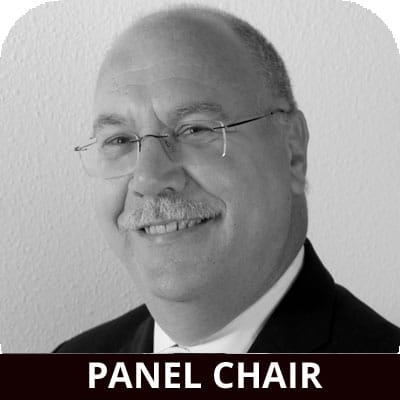
Chris Tubbs – Green Hills Software
Chris Tubbs
Chris Tubbs is an industry veteran with 43 years experience in the Avionics, Simulation, Medical, Automotive and Software Industries. After 15 years in the Aerospace industry managing safety critical systems he co- founded companies in the Simulation and Medical Imaging markets in the roles of Commercial and Managing Director. He then spent eight Years in the Automotive industry in Germany and Holland as a Development and Business Development Manager after which he joined Green Hills Software in 2008. Chris was promoted to Director of Business Development EMEA in 2012 since when he has specialized in Safety and Security.

Jonathan Moore – Exida
Jonathan Moore
Jonathan Moore is the Director of Advanced Systems with exida Consulting LLC. He has over 20 years of automotive and robotics experience in systems engineering, failure mode avoidance and standards based software development. He focuses on supporting new and existing customers with their implementation of functional safety standards.He has a Bachelor of Electrical and Electronic Systems Engineering from University of York and a Master of Science Electromagnetic Compatibility from University of York.
Jonathan has worked with (and for) several automotive OEMs around the world and hundreds of Tier Ones and startups. More recently with exida he has been called on to help innovative technology companies find solutions to real world safety problems and applies his skill and knowledge of a whole range of functional safety standards including ISO 26262 to guide engineering solutions toward improved reliability, performance and safety.
RESEARCH & DEVELOPMENT
Followed by panel discussion inc. speakers plus special guests
SESSION CHAIR
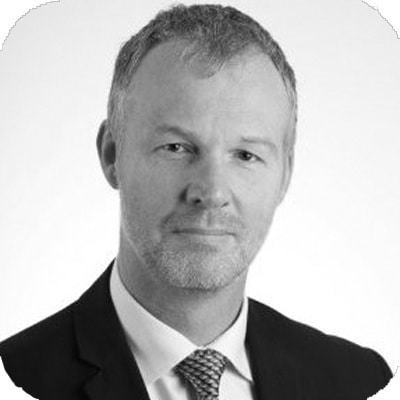
Mr. Kevin Vincent, Operations Manager for the Institute for Future Transport and Cities
Kevin has approximately 30 years’ experience in product and business development in both private and public sectors with specific expertise in EU & nationally-funded collaborative R&D projects, gained through previous roles at Pera Innovation Ltd, Altair Engineering Ltd, and as Director of his own limited company.
With a background in engineering simulation and optimisation, his particular passion is intelligent mobility and transportation systems with the objective of promoting research and impact in new environmentally sustainable and accessible forms of mobility.
He currently Chairs the Research Advisory Board for AESIN. Prior to this, after graduating from Coventry University, he spent 15 years in the automotive and aerospace sectors as a consulting engineer working for IAD (UK) Ltd and Ricardo both in the UK and USA where he spent 5 years consulting on automotive design for Chrysler, Ford and General Motors.
SPEAKERS & PANELISTS

Mike Bartley – TVS
Mike Bartley
Mike gained a PhD in Mathematical Logic from Bristol University. He has since obtained an MSc in Software Engineering and an MBA through the Open University. Mike is currently studying for an MSc in Computer Security at the University of London and an MSc in Intelligent Systems and Robotics at De Montfort University.
ABSTRACT
Autonomous vehicles are expected to have a profound effect on future transport systems as well as creating huge social and economic benefits. However, to capture those benefits there are major barriers to overcome spanning legal frameworks, regulatory compliance, insurance as well as major technical challenges to ensure the vehicles are reliable, safe and secure. This presentation will describe the Innovate UK funded project Capri, which brings together an experienced consortium to collate sufficient evidence from four deployment trials as well as simulation testing, to build trust in pods as a safe and secure mobility service and provide recommendations on regulatory compliance procedures. The project is looking into these challenges, and this presentation will report on progress regarding safety and security aspects and how they relate to regulatory compliance and realizing the economic benefits.
The presentation will cover:
– How traditional approaches to verification are unable to scale, and how simulation-based test benches using advanced verification approaches based on constrained random stimulus and model-based test generation techniques will be used to overcome this shortfall. The results obtained in this virtual environment will be validated through real-world trials.
– How accident and normal driving data can provide a framework of real-world scenarios for verification purposes
– Key issues in testing the cyber security for CAVs include understanding the attack surface and to have effective metrics to measure the security of the system. CAVs have a large and expanding attack surface, so to identifying all relevant threats is a challenge; a general reference architecture can help ensure that we do not miss important ones. Metrics should be standardised – while specific metrics are not applicable in all cases, it is useful to list all possible metrics and understand which scenarios they are suitable for.
– How the interaction with supporting cloud services, such as Fleet Management, could introduce security issues that affect safety, and the approaches we are looking at to mitigate the risks.
– How the verification and security work can be used in a regulatory compliance framework.
Attendees will gain an understanding of how the Capri project will address the safety, security and regulatory compliance challenges to allow us to overcome to barriers to exploitation of the business and social benefits of autonomous vehicles.

Richard McMahon – WMG
Richard McMahon
Professor McMahon was previously a Senior Lecturer at the Engineering Department at Cambridge University. He gained both his undergraduate degree and PhD in Engineering from Cambridge University. Following a number of post-doctoral positions, latterly in the Department of Physics in Cambridge, he returned to a Lectureship in Engineering. He is a Life Fellow of Corpus Christi College, Cambridge and is a Guest Professor at North China Electric Power University.
Professor McMahon is an Associate Editor of two IET journals (Power Electronics and Renewable Power Generation) and is on the Organizing Committee of IET’s PEMD (Power Electronics Machines and Drives Conference).
Professor McMahon has published over 240 papers and is named as an inventor on 19 patents (granted or applied for). He received a UK Energy Innovation Award in 2015 for Best University Technology (with HTIP Limited). He has given invited technical and public lectures and has supervised, or is supervising, 36 doctoral students and 23 Masters students.
ABSTRACT
Electric power-trains are a key component of the fully and hybrid electric vehicles which are coming to prominence due to coming regulations to limit the use of fuel-based vehicles in the short and medium term to reduce particulate and CO2 emissions. There is growing research activity to develop better components such high performance motors, high power density drives (particularly looking at SiC based units), high temperature and robust capacitors and lithium batteries packs with higher energy density and lower cost. However, there is less research focused on the electric power-train from a system level perspective, which is also important considering that the optimisation of individual components can compromise the whole system performance or at least make the integration of different elements in the power-train difficult.
This paper will look at the efficiency and dynamic response of a high-performance electric vehicle power-train. The experimental test rig has the following elements: a lithium battery pack, a bidirectional motor drive running in torque control mode, a PM motor drive coupled to a dynamometer working in speed control mode. All the local controllers are connected to a main CAN bus as is typically found in automotive applications. The system was assessed in the steady state and during transients. The overall efficiency (electrical to mechanical power) was measured at different speeds and loads. Finally, a series of motoring – regenerative braking torque cycles were applied to the system to measure the evolution of the state of charge (SoC) during the cycles.
The main contribution of this paper is the assessment of the complete electric power-train. Similar studies usually replace the battery pack with a DC power supply or use a regular motor drive instead of the actual automotive unit. In both cases the dynamics of the whole system change, and the loss of system performance as the battery is being discharged is not revealed.

Angelos Goulianos – Satellite Applications Catapult
Angelos Goulianos
In May 2018, Angelos was appointed Senior Wireless Systems Engineer at the Satellite Applications Catapult.
Prior to joining the Catapult, Angelos was with University of Bristol as senior research associate in wireless communications, and responsible for developing Physical layer implementation for Wi-Fi, White-Fi, 4G, and 5G signal processing units targeting the usability of such systems in the automotive industry. In addition, he performed several channel measurements campaigns as well as simulated studies for the operation of communication systems within various vehicular propagation environments.
Angelos has also worked in ESA/ESTEC developing the multiband OFDM based (Wi-Media) standard for intra-satellite links targeting the offloading of wired connections with robust wireless replacements.
Angelos has published over 30 technical paper related to wireless connectivity in international journal and conferences. He holds a diploma in Physics from Aristotle University of Thessaloniki and received his MSc and PhD diplomas in wireless communications, from University of Surrey, UK.

Siddartha Khastgir – WMG
Siddartha Khastgir
Siddartha has a diverse industrial experience in the automotive industry in different parts of the world: India, Germany and now in the UK, leading multi-cultural teams to deliver large commercial projects successfully.
After his PhD at WMG, Siddartha now is a Principal Engineer and the research lead for Verification & Validation of CAVs at WMG, University of Warwick, leading various CR&D projects at WMG. His research areas include test scenarios, functional safety, use of simulation for testing among many others. He represents the UK on the ISO Technical Committee and is the lead author of a new international standard for Low-Speed Automated Driving (LSAD) systems.
He has received numerous awards for his research contributions which have delivered impact to the automotive industry both nationally and internationally. He has been recognized in the Forbes 30 Under 30 Europe 2018 list and also by TechWorks last year as TechWorks Young Engineer of the Year 2017.
EXECUTIVE PANEL
Theme : How should we exploit UK strengths

Venn Chesterton – UKRI Innovate UK
Venn Chesterton
Venn helps companies turn technology and business model concepts into successful product and service innovation that boosts the UK economy and deliver policy objectives such as improved air quality and reduced CO2 emissions. Most recently he has been instrumental in developing the bid for the next round of industrial strategy challenge funding for power electronics, motors and drives.
Venn joined Innovate UK last year from Transport Research Laboratories where he lead the ULEV and Energy consultancy business. Prior to that he spent five years working on low emission vehicle policy at TfL and the Mayor of London’s office.

Tony Harper – UKRI Faraday Battery Challenge
Tony Harper
Tony Harper is The Industrial Strategy Challenge Director for the Faraday Battery Challenge at UKRI. Tony was previously Director of Research Engineering for Jaguar Land Rover. Tony joined Jaguar as a Graduate Engineer in 1986 with an honours degree in Aeronautical Engineering at Imperial College London. He spent his early career developing the first Airbag-based passive safety systems and developing a number of sports car concepts including the first XK8.
In the early 1990’s, Tony was involved in the development and use of pioneering Knowledge Based Engineering systems automating sophisticated rule-based Design tasks. In 1999, Tony was appointed as head of Jaguar’s Vehicle Engineering team responsible for Concept Design, Packaging, Aerodynamics and Vehicle Computer Aided Engineering. In 2006, Tony joined Jaguar Land Rover’s combined Product Development Operations to head up the Research and Advanced group. In recent years , Tony has worked closely with the EPSRC and Innovate UK on a number of large, strategic projects on Electrification and Autonomy. He’s a Chartered Engineer, fellow of the IMechE, an honorary fellow of the University Of Warwick, an elected member of the UK Automotive Council Technology group, sits on numerous advisory councils and has recently become a Fellow of The Royal Academy of Engineering.

Daniel Ruiz
Meridian
Daniel Ruiz
Dr Daniel Ruiz joined Meridian Mobility UK Ltd (Meridian) as CEO in January 2018 leading the UK’s £100 million connected and autonomous vehicle (CAV) programme.
Meridian is the UK’s hub for testing and development of CAV, established in September 2017 with joint funding from industry and government to accelerate the uptake of CAV technologies and to exploit their social and economic potential.
Meridian is currently channelling £100m of matched funding into infrastructure and associated projects which will form the core of Testbed UK: an integrated, comprehensive testing ecosystem for CAV and their environments. Meridian is responsible for scoping and overseeing the ecosystem.
Daniel joined Meridian from Dynniq UK Ltd, where he was Managing Director. As MD of Dynniq, Daniel led a 500-strong team tackling traffic challenges on the road networks in the UK and Ireland by developing, installing and maintaining a number of technology-based solutions. He previously held roles as Head of Real Time Operations at Transport for London (TfL), Launch Director of the UK’s intelligent mobility innovation centre (the Transport Systems Catapult), and Programme Director for the Transport Coordination Centre for the London 2012 Games.
Daniel gained his engineering degree from Selwyn College, Cambridge and his PhD in engineering from New College, Oxford.

Stephen Doran – CSA Catapult
Stephen Doran
Stephen Doran is Chief Executive Officer for the Compound Semiconductor Applications Catapult, leading the strategic direction of the Catapult and driving our approach to accelerate UK industry’s ability to exploit advancements in compound semiconductor technologies.
Stephen has over 25 years of experience in the global electronics markets, introducing many successful new products ranging from mixed signal audio processors to complex multimedia smart phones.
Before joining the CSA Catapult, Stephen was Director of Operations and Transformation for Raytheon Systems Ltd in the UK. Prior to that he was Managing Director of the Raytheon’s Glenrothes facility in Fife where he led the transformational growth of the Power & Control Business and Manufacturing Function. Stephen has also served as Chief Operating Officer at Wolfson Microelectronics and worked for consumer electronics giant Motorola, where he led on new product development and commercial strategies for the US, European and Asian markets.
Stephen’s experience has given him a solid background in global management and cultural diversity, as well as a strong pedigree in operations, strategy, program management and product & portfolio management.

Stewart Edmondson – CEO, UKESF
Stewart Edmondson
Stewart Edmondson is CEO of the UK Electronics Skills Foundation. Stewart read for a degree for Electronics at the University of Salford and went on to serve almost twenty-four years in the Royal Air Force, first as an Engineering Officer, specialising in operational communications-electronics systems, and later assuming senior positions responsible for ICT policy, maintenance regulations and information security. During his service, Stewart studied for a MBA and completed a MA in Defence Studies at King’s College, London. His military career culminated as the Commanding Officer of Number 1 Radio School, which delivered training and education for all of the RAF’s ICT specialists.
Subsequent to leaving the RAF, Stewart pursued his interest in training and technology with a role at QinetiQ, before gaining further commercial experience through management roles in HR services at Xchanging and then BAE Systems. At BAE he focused on the development and delivery of early careers programmes for graduates and apprentices. He has been a Chartered Engineer for over twenty years and was elected as a Fellow of the Institution
As well as being part of the executive panel, Mike Short will also be our pre-dinner speaker. His presentation will be “When the internet meets the car; when e-commerce meets automotive.”

Mike Short – Dept. for International Trade
Mike Short
Dr Mike Short CBE , after 30 years in telecommunications with Telefonica, joined the Department for International Trade as the department’s first chief scientific adviser in December 2017.
Mike leads the science and engineering profession in the department and ensures its policy is informed by the best science, engineering and technical advice. He advises on the technical aspects of future trade deals as DIT looks to create new arrangements following Brexit, and works with the UK’s research, development and academic communities to boost scientific and engineering exports.
Mike has over 40 years’ experience in electronics and telecommunications and served as vice president of Telefonica, the parent company of the O2 mobile phone network, for 17 years to December 2016. In this post, he managed the launch of 2G (GSM) and 3G mobile technologies in the UK, and led research and development for Telefonica Europe. His career also includes the promotion of international technical standards in mobile technology, and he is also a former Chairman of the Global GSM Association, the UK Mobile Data Association, and president of the Institution of Engineering and Technology.
He is currently a visiting professor at the universities of Surrey, Coventry, Leeds, Lancaster and Salford, where in recent years he has led the development on collaborations in areas such as smart cities, digital healthcare, cybersecurity and driverless vehicles.
He was honoured with a CBE in 2012 for his services to the mobile industry.
ABSTRACT
When the internet meets the car; when e-commerce meets automotive.
The driving experience as we know can be made easier, safer and more enjoyable through the use of the internet. The new era of technologies within our cars can introduce the opportunity to better support breakdowns, repairs, software updates and many more challenges. The car can become smarter with 21st century technology, particularly helping those operating around major cities.
The future is exciting but is the UK ready for the introduction of this ground-breaking technology?
